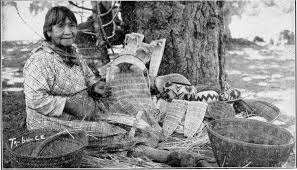Last chance to enter to win the book
High Country Women: Pioneers of Yosemite National Park
Celebrate the 126th anniversary of Yosemite!

The dark clouds that hovered over a crude trail in Yosemite Valley in May 1899 broke loose with a torrent of rain that nearly knocked Paiute Indian Maggie “Ta-bu-ce” Howard and her fourteen-year-old niece, May Tom, off the rocky path where they walked. Mighty claps of thunder echoed around the majestic granite walls of Yosemite Falls, and huge boulders shook from the sound. A powerful wind charged down the mountain and tossed leaves, twigs, and brush into the air. Maggie and May Tom hurried to an outcropping of craggy rocks and huddled underneath them. Lightning flashed violently, and the wind raged on without ceasing. It was as if the sky just beyond their crude shelter was in an angry pursuit to destroy them.1
As soon as the rain eased a bit, the pair raced toward a grove of trees, and it was there they made camp. The following morning they had planned to travel to their home in Indian Village along the Merced River. In spite of the wind and continual rain, Maggie and May Tom eventually managed to fall asleep. Their uneasy slumber was interrupted sometime in the night by a massive pine tree that blew over on them. May Tom was killed instantly. Maggie’s collar bone was broken; the bones in her right leg were fractured, and her ankles and feet were severely injured.2
When the two didn’t arrive home the evening of the storm worried relatives had gone in search of Maggie and her niece. They were heartbroken by what they saw. May Tom’s mother and brothers took her body back to the valley where they lived, and Maggie was transported to a doctor. He set her bones in casts that extended over most of her frame. She was unable to move until the bones mended in late August. Maggie couldn’t recall anything after the tree hit her, but the lifetime limp she acquired as a result of her injury served as a reminder of the events leading up to the tragedy.3
Naturalist and explorer John Muir referred to the storms that occurred at Yosemite as “not easily borne.” Maggie was in complete agreement. According to the June 3, 1910, edition of the Hayward, California, newspaper the Hayward Daily Review, it is estimated that Maggie “Ta-bu-ce” Howard was born in 1867 at Mono Lake thirteen miles east of Yosemite Valley. She was a Paiute Indian and her name Ta-bu-ce meant “grass nut” or “sweet-root.” Her father, Joaquin Sam or Kosana as his tribe called him, was a medicine man who made frequent trips to Yosemite to gather acorns and pinon nuts. He would bring them home to Maggie’s mother who would grind them into meat to use to make bread. Kosana passed away at the age of eighty while en route home from Yosemite Valley. A snowstorm overtook the group of Indians he was traveling with, and they were unable to make it over the Sierra Mountains before Kosana died from exposure. He was buried near what is now the Yosemite Museum.4
To learn more about Maggie Howard and the other women who helped make Yosemite a National Park read
High Country Women: Pioneers of Yosemite National Park

